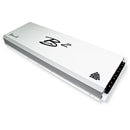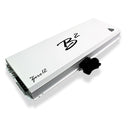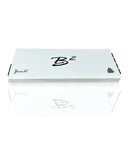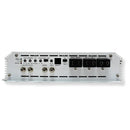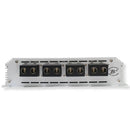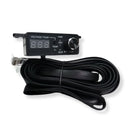Description
PLEASE NOTE THIS IS A SPECIAL ORDER ITEM AND DOES NEED TO BE ORDERED IN.
Prepare to unleash the full force of sonic domination with the B2 Audio ZERO 12K Watts Monoblock Amplifier. This isn’t just an amplifier; it’s a relentless powerhouse engineered to obliterate the competition and elevate your audio experience to unprecedented levels of intensity. With a jaw-dropping 12,000 watts of power at 1 ohm, this Class-D Half Bridge Korean amplifier is the epitome of brute force and precision engineering. Whether you’re a seasoned car audio enthusiast craving ear-splitting volume or a professional sound engineer seeking uncompromising performance, the B2 Audio ZERO 12K Watts Amplifier delivers the thunderous bass and crystal-clear highs you demand. Dominate the streets, the stage, or the stadium with unrivaled authority. It’s time to unleash the beast within your sound system.
Zero 12
The Zero amplifiers by B2 Audio have a long-standing reputation for top-quality performance since their introduction in the late 2000s. These amplifiers have continued to set new standards in car audio for over 15 years and were available in Reference models and competition edge mono-blocks. The all-new Zero 12 Elite model is an exceptional combination of unique features and qualities found in B2 audio’s previous M and Zero amplifiers. This model is designed primarily for car audio enthusiasts who expect the very best in terms of performance and features. The Zero 12 is distinguished by a Norse mythology icon, The Valknut, which is traditionally used only for the top-of-the-line models. The power and ground connection arrangement on the Zero 9 is fused and arranged logically, which makes it much easier to avoid confusion. In fact, it is a welcomed feature that helps save time and reduce costly mistakes. You don’t have to worry about typical confusion that can be found in other amplifier setups. This design includes quad power terminals, also known as “logical quads,” which are designed with sense in mind, keeping your wiring job neat and organized.
Logical Quads
Half-Bridge in a chain
Can you connect multiple half bridge amplifiers together? Yes, you can connect them in a “chain” mode, and the signal will come from the master amplifier. This is useful if you want to match the gain of the amplifiers or split the signal. This gain feature allows you to fine tune the amplifiers to ensure they have the same voltage and output level.
This amplifier has useful features to make installation easier. With the “remote in and remote out” feature, there’s no need to split the switched 12v remote into multiple wires. The dual 4-gauge terminals allow for connection to subwoofers without concern for wire size. The bass remote provides voltage and clip light information from the driver’s seat.
Partially Regulated Power
A technology that reduces power loss due to impedance rise in half-bridge designs. This technology is able to deliver more power to higher ohms compared to other unregulated half-bridge technologies. It operates with a dynamic power measurement below 1% THD in order to maximize performance. Additionally, it has slightly minimized regulation above 1% THD to unleash the full potential of the system. The PRP feature is a valuable addition to any half-bridge system, providing unparalleled power and performance.
Beyond The Force
Summed up, the features and pure power that the Zero 12 provides are amongst the best on the market. It is enough to make any system impressively loud at any warranted impedance. However, be aware of the amperage and voltage required to unleash the full potential of the Zero 12; the 1200 A fuse rating is there for a reason.
If you want to monitor your voltage, the supplied bass controller keeps you updated with voltage, thermal status, and clipped signals. Additionally, the Quad fan setup allows for the option to run them all the time, turn them off, or run them in automatic mode, giving you unmatched flexibility.
| 14.4v <1% THD | 16v <1% THD | ||
|---|---|---|---|
| Power @ 4 Ω: | 1 x 4000 w | 1 x 4500 w | |
| Power @ 2 Ω: | 1 x 7500 w | 1 x 8200 w | |
| Power @ 1 Ω: | 1 x 12500 w | 1 x 14000 w | |
| Power @ 0.50 Ω 12.6v (burst): | — | 1 x 20088w |
Specification
| Frequency Response: | 10 Hz ~ 300Hz |
| Signal to Noise Ratio: | > 95 dB |
| Input Sensitivity: | 5 ~ 0.2 V |
| Crossover: | 24 dB / Oct |
| Subsonic Crossover: | 10Hz – 50Hz |
| Low Pass Crossover: | 35 Hz – 250Hz |
| Damping Factor: | >400 |
| Power Terminal Gauge: | 0 GA x4 |
| Fuse Rating: | 1000 A |
| Operational voltage: | 9.5 V ~ 17.5 V |
| Dimensions: | 800 x 315 x 75 MM |
Payment & Security
Your payment information is processed securely. We do not store credit card details nor have access to your credit card information.







